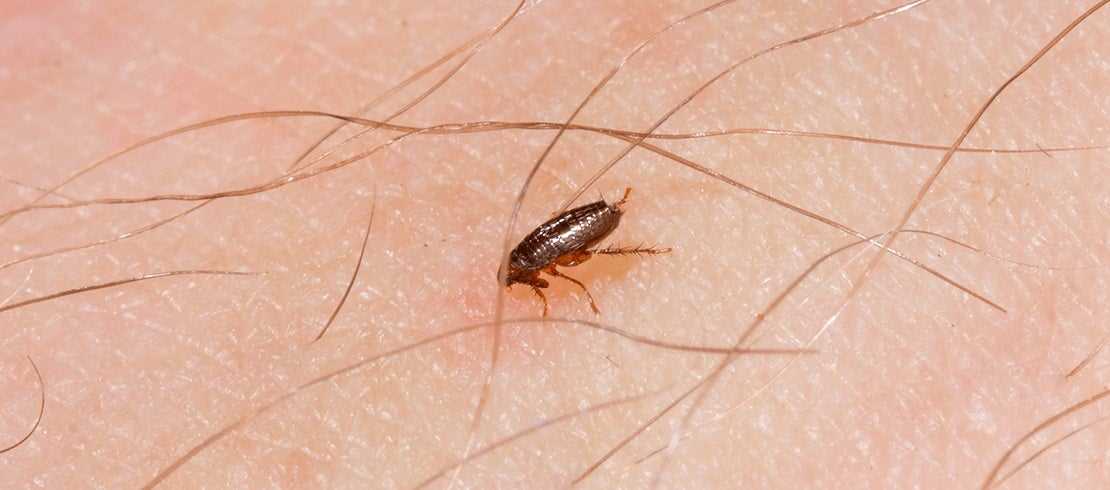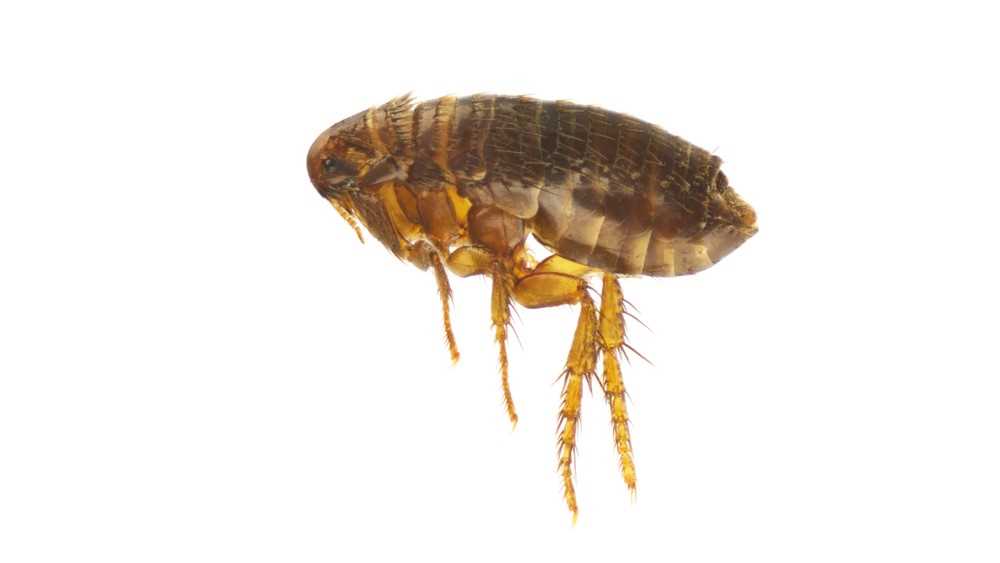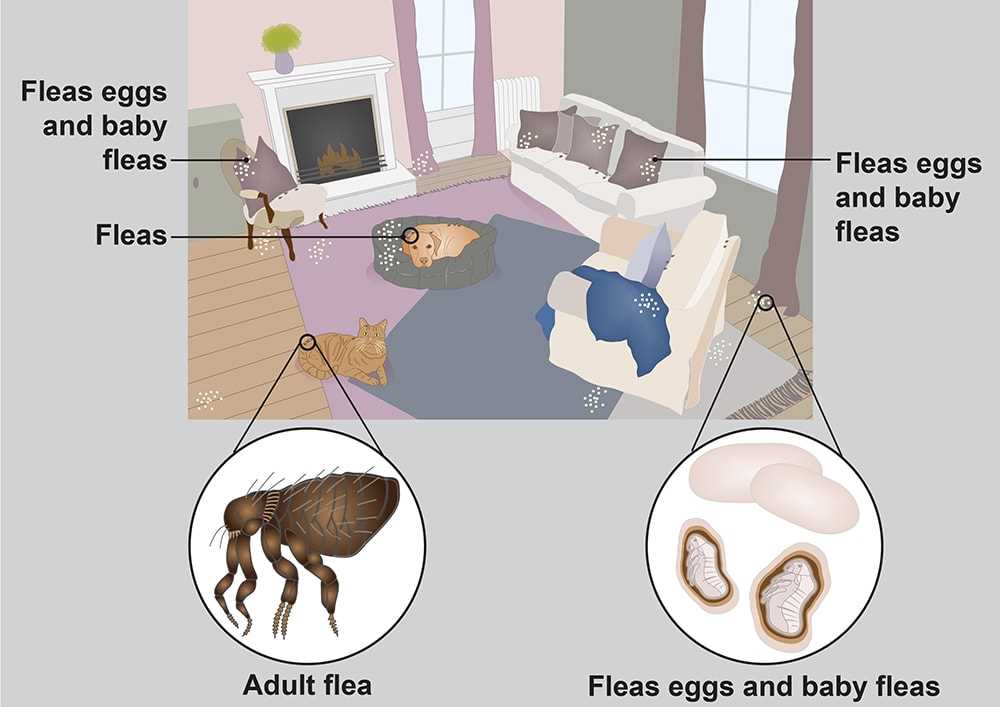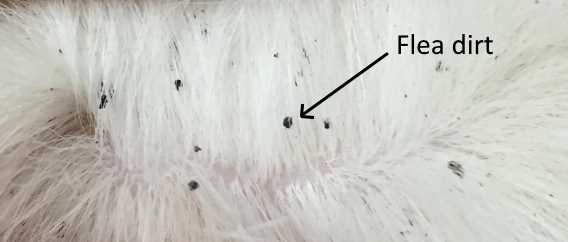Yes, those furry four-legged beings can indeed become hosts for the tiny bloodsuckers that typically target felines. It’s a common misconception that only one species is affected by these nuisances, but the reality is that they can easily jump from one animal to another.
To minimize the risk of transmission, regular grooming is key. Brushing your canine friend’s coat can help spot these unwanted visitors before they become a bigger issue. Additionally, maintaining a clean environment, including frequent vacuuming and washing bedding, can significantly reduce the chances of an infestation.
Utilizing preventive treatments designed for dogs is also advisable. Consult your veterinarian to find suitable options that can safeguard your pooch from these tiny invaders. Staying proactive with regular checks and preventive measures will keep both your feline and canine companions happy and healthy.
Can Dogs Get Fleas from Cats?
Yes, these furry friends can indeed become hosts for parasites typically associated with felines. When in close proximity, it’s entirely possible for one species to transmit these unwelcome hitchhikers to another. If you’re a pet owner, it’s crucial to monitor both your feline and canine companions for signs of infestation.
Signs of Infestation

Look for the following indicators that your pet might be dealing with an infestation:
- Excessive scratching or biting at the skin
- Red or irritated skin
- Small black specks in the fur or on bedding (flea dirt)
- Hair loss in patches
Prevention Tips

To keep your pets safe, here are some effective measures:
| Prevention Method | Description |
|---|---|
| Regular Grooming | Brush both pets frequently to check for any signs of parasites. |
| Effective Treatments | Use veterinarian-recommended treatments for both species, as they can help eliminate existing pests and prevent future issues. |
| Maintain Clean Environment | Vacuum frequently and wash pet bedding to reduce the risk of infestation. |
| Limit Outdoor Exposure | Keep pets indoors as much as possible, especially during peak flea seasons. |
Taking these steps can significantly reduce the chances of your furry companions sharing unwanted guests. Stay vigilant and proactive in your pet care routine!
Understanding Flea Transmission Between Felines and Canines
If you suspect those little bloodsuckers have invaded your home, it’s crucial to act swiftly. Fleas can hop from one pet to another, easily transferring between different species. Both species can share infestations, especially in environments where they interact. Regular treatments and preventive measures are key to keeping your furry friends safe.
How Transmission Occurs
Fleas are excellent jumpers, capable of leaping several times their body length. This means that if one of your companions has an infestation, the other can quickly become a host. Additionally, these tiny insects lay eggs in the environment, which can lead to a widespread issue if not addressed promptly.
Preventive Measures
To protect all pets in your home, utilize treatments designed for each species. Regular grooming and vacuuming can help eliminate any lingering pests. If your feline friend is experiencing discomfort, consider exploring the best anti itch medicine for cats to relieve their irritation. Keeping a clean environment and monitoring interactions between your pets can significantly reduce the risk of infestation.
Identifying Symptoms of Flea Infestation in Dogs
If you notice your furry friend scratching excessively, it may indicate an infestation. Look for areas where they are biting or licking their skin, particularly around the base of the tail and behind the ears.
Physical Signs
Red, inflamed skin is a common symptom. You might also spot small, dark specks on their fur, which are flea droppings. Check the coat; if it appears dull or unkempt, that could be a sign of discomfort caused by these tiny invaders.
Behavioral Changes
Increased restlessness or agitation can signal an issue. If your companion is suddenly more irritable or avoids their usual playtime, it’s worth investigating further. Changes in appetite or sleep patterns might also accompany a problematic situation.
Regular grooming and check-ups can help identify these issues early. If you suspect a problem, consulting a veterinarian for treatment options is advisable.
Preventive Measures to Protect Dogs from Cat Fleas
Regular grooming is a straightforward way to minimize the risk of an infestation. Use a fine-toothed comb specifically designed for removing parasites. This can help identify and eliminate any unwanted visitors early.
Top Preventive Products

- Flea collars: Choose one with proven efficacy against multiple types of pests.
- Topical treatments: Apply monthly solutions that provide protection against various parasites.
- Oral medications: Consult with a veterinarian for recommendations on safe options.
Environmental Control

- Regular cleaning: Vacuum carpets, furniture, and pet bedding frequently to remove eggs and larvae.
- Wash bedding: Hot water washes eliminate potential eggs and adult pests.
- Yard maintenance: Keep the outdoor area tidy to reduce hiding spots for any pests.
Monitoring for unusual behaviors or signs of discomfort allows for quick action if a problem arises. A proactive approach ensures a comfortable and healthy living environment. Always consult with a healthcare professional for tailored advice and product recommendations based on specific needs.
Treatment Options for Dogs Affected by Cat Fleas
The first step in addressing a flea issue is to consult a veterinarian for tailored advice. Prescription treatments, such as topical solutions or oral medications, can effectively eliminate these unwanted guests from furry friends. Products like Advantage II or Frontline Plus are commonly recommended for their quick action and long-lasting effects.
Topical Treatments
Topical solutions are applied directly to the skin and provide immediate relief. It’s vital to ensure that the chosen product is specifically formulated for the pet’s size and weight. Proper application is crucial; follow the instructions closely to avoid any mishaps.
Oral Medications
Oral treatments offer a different approach. Options like Capstar work rapidly, killing fleas within hours. These can be used as a quick fix but may require a longer-term plan for sustained control.
Environmental control is equally important. Regular cleaning of bedding, carpets, and furniture can significantly reduce the risk of reinfestation. Consider using a vacuum with a HEPA filter and washing items in hot water.
In some cases, a flea collar may be beneficial. These collars release chemicals that repel or kill fleas, providing an additional layer of protection. However, not all collars are suitable for every breed, so it’s wise to verify compatibility beforehand.
Lastly, integrating a flea prevention plan into routine care is crucial. Monthly treatments can help maintain a flea-free environment and protect against future infestations.
Yes, those furry four-legged beings can indeed become hosts for the tiny bloodsuckers that typically target felines. It’s a common misconception that only one species is affected by these nuisances, but the reality is that they can easily jump from one animal to another.
To minimize the risk of transmission, regular grooming is key. Brushing your canine friend’s coat can help spot these unwanted visitors before they become a bigger issue. Additionally, maintaining a clean environment, including frequent vacuuming and washing bedding, can significantly reduce the chances of an infestation.
Utilizing preventive treatments designed for dogs is also advisable. Consult your veterinarian to find suitable options that can safeguard your pooch from these tiny invaders. Staying proactive with regular checks and preventive measures will keep both your feline and canine companions happy and healthy.
Can Dogs Get Fleas from Cats?
Yes, these furry friends can indeed become hosts for parasites typically associated with felines. When in close proximity, it’s entirely possible for one species to transmit these unwelcome hitchhikers to another. If you’re a pet owner, it’s crucial to monitor both your feline and canine companions for signs of infestation.
Signs of Infestation

Look for the following indicators that your pet might be dealing with an infestation:
- Excessive scratching or biting at the skin
- Red or irritated skin
- Small black specks in the fur or on bedding (flea dirt)
- Hair loss in patches
Prevention Tips

To keep your pets safe, here are some effective measures:
| Prevention Method | Description |
|---|---|
| Regular Grooming | Brush both pets frequently to check for any signs of parasites. |
| Effective Treatments | Use veterinarian-recommended treatments for both species, as they can help eliminate existing pests and prevent future issues. |
| Maintain Clean Environment | Vacuum frequently and wash pet bedding to reduce the risk of infestation. |
| Limit Outdoor Exposure | Keep pets indoors as much as possible, especially during peak flea seasons. |
Taking these steps can significantly reduce the chances of your furry companions sharing unwanted guests. Stay vigilant and proactive in your pet care routine!
Understanding Flea Transmission Between Felines and Canines
If you suspect those little bloodsuckers have invaded your home, it’s crucial to act swiftly. Fleas can hop from one pet to another, easily transferring between different species. Both species can share infestations, especially in environments where they interact. Regular treatments and preventive measures are key to keeping your furry friends safe.
How Transmission Occurs
Fleas are excellent jumpers, capable of leaping several times their body length. This means that if one of your companions has an infestation, the other can quickly become a host. Additionally, these tiny insects lay eggs in the environment, which can lead to a widespread issue if not addressed promptly.
Preventive Measures
To protect all pets in your home, utilize treatments designed for each species. Regular grooming and vacuuming can help eliminate any lingering pests. If your feline friend is experiencing discomfort, consider exploring the best anti itch medicine for cats to relieve their irritation. Keeping a clean environment and monitoring interactions between your pets can significantly reduce the risk of infestation.
Identifying Symptoms of Flea Infestation in Dogs
If you notice your furry friend scratching excessively, it may indicate an infestation. Look for areas where they are biting or licking their skin, particularly around the base of the tail and behind the ears.
Physical Signs
Red, inflamed skin is a common symptom. You might also spot small, dark specks on their fur, which are flea droppings. Check the coat; if it appears dull or unkempt, that could be a sign of discomfort caused by these tiny invaders.
Behavioral Changes
Increased restlessness or agitation can signal an issue. If your companion is suddenly more irritable or avoids their usual playtime, it’s worth investigating further. Changes in appetite or sleep patterns might also accompany a problematic situation.
Regular grooming and check-ups can help identify these issues early. If you suspect a problem, consulting a veterinarian for treatment options is advisable.
Preventive Measures to Protect Dogs from Cat Fleas
Regular grooming is a straightforward way to minimize the risk of an infestation. Use a fine-toothed comb specifically designed for removing parasites. This can help identify and eliminate any unwanted visitors early.
Top Preventive Products

- Flea collars: Choose one with proven efficacy against multiple types of pests.
- Topical treatments: Apply monthly solutions that provide protection against various parasites.
- Oral medications: Consult with a veterinarian for recommendations on safe options.
Environmental Control

- Regular cleaning: Vacuum carpets, furniture, and pet bedding frequently to remove eggs and larvae.
- Wash bedding: Hot water washes eliminate potential eggs and adult pests.
- Yard maintenance: Keep the outdoor area tidy to reduce hiding spots for any pests.
Monitoring for unusual behaviors or signs of discomfort allows for quick action if a problem arises. A proactive approach ensures a comfortable and healthy living environment. Always consult with a healthcare professional for tailored advice and product recommendations based on specific needs.
Treatment Options for Dogs Affected by Cat Fleas
The first step in addressing a flea issue is to consult a veterinarian for tailored advice. Prescription treatments, such as topical solutions or oral medications, can effectively eliminate these unwanted guests from furry friends. Products like Advantage II or Frontline Plus are commonly recommended for their quick action and long-lasting effects.
Topical Treatments
Topical solutions are applied directly to the skin and provide immediate relief. It’s vital to ensure that the chosen product is specifically formulated for the pet’s size and weight. Proper application is crucial; follow the instructions closely to avoid any mishaps.
Oral Medications
Oral treatments offer a different approach. Options like Capstar work rapidly, killing fleas within hours. These can be used as a quick fix but may require a longer-term plan for sustained control.
Environmental control is equally important. Regular cleaning of bedding, carpets, and furniture can significantly reduce the risk of reinfestation. Consider using a vacuum with a HEPA filter and washing items in hot water.
In some cases, a flea collar may be beneficial. These collars release chemicals that repel or kill fleas, providing an additional layer of protection. However, not all collars are suitable for every breed, so it’s wise to verify compatibility beforehand.
Lastly, integrating a flea prevention plan into routine care is crucial. Monthly treatments can help maintain a flea-free environment and protect against future infestations.
Yes, those furry four-legged beings can indeed become hosts for the tiny bloodsuckers that typically target felines. It’s a common misconception that only one species is affected by these nuisances, but the reality is that they can easily jump from one animal to another.
To minimize the risk of transmission, regular grooming is key. Brushing your canine friend’s coat can help spot these unwanted visitors before they become a bigger issue. Additionally, maintaining a clean environment, including frequent vacuuming and washing bedding, can significantly reduce the chances of an infestation.
Utilizing preventive treatments designed for dogs is also advisable. Consult your veterinarian to find suitable options that can safeguard your pooch from these tiny invaders. Staying proactive with regular checks and preventive measures will keep both your feline and canine companions happy and healthy.
Can Dogs Get Fleas from Cats?
Yes, these furry friends can indeed become hosts for parasites typically associated with felines. When in close proximity, it’s entirely possible for one species to transmit these unwelcome hitchhikers to another. If you’re a pet owner, it’s crucial to monitor both your feline and canine companions for signs of infestation.
Signs of Infestation

Look for the following indicators that your pet might be dealing with an infestation:
- Excessive scratching or biting at the skin
- Red or irritated skin
- Small black specks in the fur or on bedding (flea dirt)
- Hair loss in patches
Prevention Tips

To keep your pets safe, here are some effective measures:
| Prevention Method | Description |
|---|---|
| Regular Grooming | Brush both pets frequently to check for any signs of parasites. |
| Effective Treatments | Use veterinarian-recommended treatments for both species, as they can help eliminate existing pests and prevent future issues. |
| Maintain Clean Environment | Vacuum frequently and wash pet bedding to reduce the risk of infestation. |
| Limit Outdoor Exposure | Keep pets indoors as much as possible, especially during peak flea seasons. |
Taking these steps can significantly reduce the chances of your furry companions sharing unwanted guests. Stay vigilant and proactive in your pet care routine!
Understanding Flea Transmission Between Felines and Canines
If you suspect those little bloodsuckers have invaded your home, it’s crucial to act swiftly. Fleas can hop from one pet to another, easily transferring between different species. Both species can share infestations, especially in environments where they interact. Regular treatments and preventive measures are key to keeping your furry friends safe.
How Transmission Occurs
Fleas are excellent jumpers, capable of leaping several times their body length. This means that if one of your companions has an infestation, the other can quickly become a host. Additionally, these tiny insects lay eggs in the environment, which can lead to a widespread issue if not addressed promptly.
Preventive Measures
To protect all pets in your home, utilize treatments designed for each species. Regular grooming and vacuuming can help eliminate any lingering pests. If your feline friend is experiencing discomfort, consider exploring the best anti itch medicine for cats to relieve their irritation. Keeping a clean environment and monitoring interactions between your pets can significantly reduce the risk of infestation.
Identifying Symptoms of Flea Infestation in Dogs
If you notice your furry friend scratching excessively, it may indicate an infestation. Look for areas where they are biting or licking their skin, particularly around the base of the tail and behind the ears.
Physical Signs
Red, inflamed skin is a common symptom. You might also spot small, dark specks on their fur, which are flea droppings. Check the coat; if it appears dull or unkempt, that could be a sign of discomfort caused by these tiny invaders.
Behavioral Changes
Increased restlessness or agitation can signal an issue. If your companion is suddenly more irritable or avoids their usual playtime, it’s worth investigating further. Changes in appetite or sleep patterns might also accompany a problematic situation.
Regular grooming and check-ups can help identify these issues early. If you suspect a problem, consulting a veterinarian for treatment options is advisable.
Preventive Measures to Protect Dogs from Cat Fleas
Regular grooming is a straightforward way to minimize the risk of an infestation. Use a fine-toothed comb specifically designed for removing parasites. This can help identify and eliminate any unwanted visitors early.
Top Preventive Products

- Flea collars: Choose one with proven efficacy against multiple types of pests.
- Topical treatments: Apply monthly solutions that provide protection against various parasites.
- Oral medications: Consult with a veterinarian for recommendations on safe options.
Environmental Control

- Regular cleaning: Vacuum carpets, furniture, and pet bedding frequently to remove eggs and larvae.
- Wash bedding: Hot water washes eliminate potential eggs and adult pests.
- Yard maintenance: Keep the outdoor area tidy to reduce hiding spots for any pests.
Monitoring for unusual behaviors or signs of discomfort allows for quick action if a problem arises. A proactive approach ensures a comfortable and healthy living environment. Always consult with a healthcare professional for tailored advice and product recommendations based on specific needs.
Treatment Options for Dogs Affected by Cat Fleas
The first step in addressing a flea issue is to consult a veterinarian for tailored advice. Prescription treatments, such as topical solutions or oral medications, can effectively eliminate these unwanted guests from furry friends. Products like Advantage II or Frontline Plus are commonly recommended for their quick action and long-lasting effects.
Topical Treatments
Topical solutions are applied directly to the skin and provide immediate relief. It’s vital to ensure that the chosen product is specifically formulated for the pet’s size and weight. Proper application is crucial; follow the instructions closely to avoid any mishaps.
Oral Medications
Oral treatments offer a different approach. Options like Capstar work rapidly, killing fleas within hours. These can be used as a quick fix but may require a longer-term plan for sustained control.
Environmental control is equally important. Regular cleaning of bedding, carpets, and furniture can significantly reduce the risk of reinfestation. Consider using a vacuum with a HEPA filter and washing items in hot water.
In some cases, a flea collar may be beneficial. These collars release chemicals that repel or kill fleas, providing an additional layer of protection. However, not all collars are suitable for every breed, so it’s wise to verify compatibility beforehand.
Lastly, integrating a flea prevention plan into routine care is crucial. Monthly treatments can help maintain a flea-free environment and protect against future infestations.






